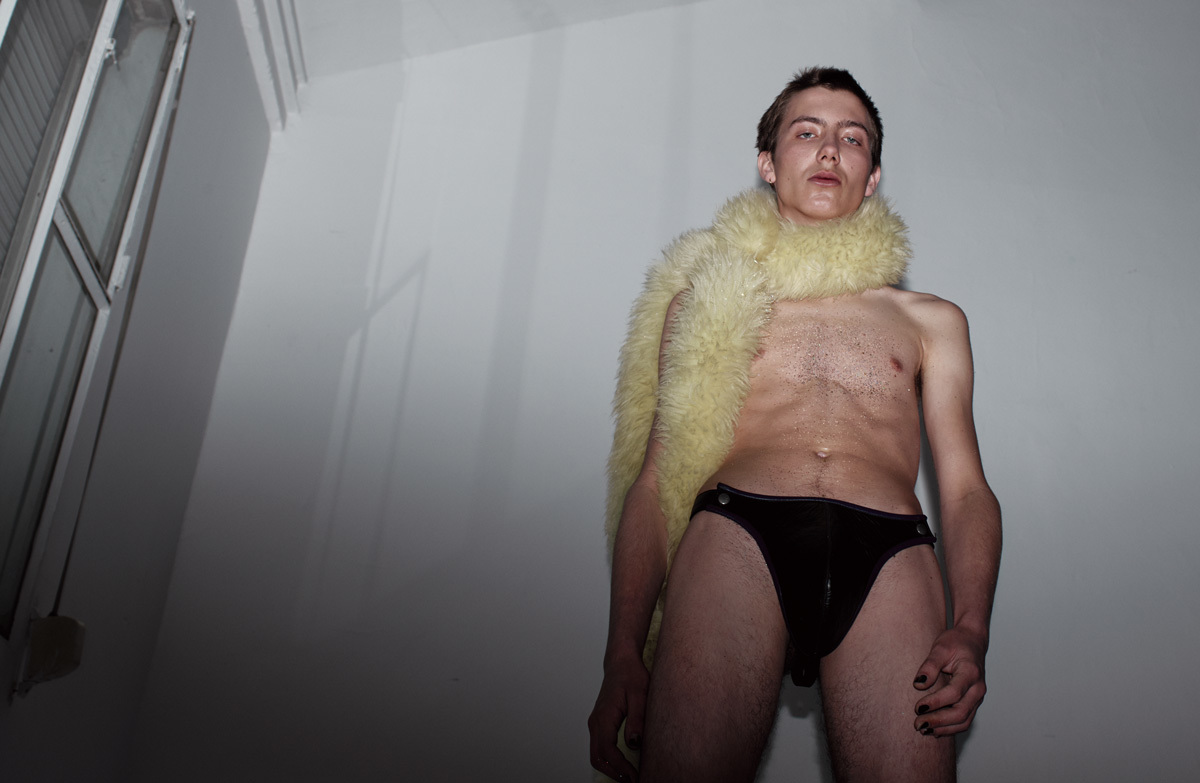In April 2016, Vetements received an email from a man in Stuttgart who had purchased its spring/summer 16 ‘Polizei’ print trench coat. “He was somewhere in a park, or a forest, cruising or whatever,” Demna Gvasalia quips, “and got arrested by the police. He spent two hours in custody and was investigated.” No law in Germany protects the commercial use of the word for police, but that didn’t stop authorities. “They confiscated his trench coat, so we sent him another one. I don’t know how many other people will be arrested in Germany, because they all sold out quite fast,” Demna smiles. Since founding Vetements in 2014, the Creative Director has made a point of insisting he makes clothes simply for the sake of clothes, yet incidents like this easily reflect the brand’s ability to mirror and impact the global political climate, even if it’s not courting it. “I love the fact that this stupid trench coat creates this conversation,” he says. “Look at Paris. You go to a shopping mall and they search you. It’s unbelievable. We never thought about that when we did the security and police prints, but it kind of makes sense in this context today.”
In just four seasons, the graphic statements and twisted constructions of Vetements have captured the global mood like no brand before. At fitting sessions, Demna and his seven designers, who all come from different parts of the world, each bring their individual memories and associations with the same design elements to the conversation, creating an internationally relatable design approach that’s turned Vetements into the biggest worldwide fashion phenomenon of the internet age. In a show season defined by a desire for global fellowship and the intensifying political situations around the world — from European mass-migration to American war-mongering and the ever-increasing international gap between left and right — no studio serves as a better poster brand for the global nation than Vetements. It occupies a four-storey building in the vastly multicultural 10th arrondissement of Paris — a striking contrast to the bourgeois Left Bank where Demna spends half his week as Creative Director for Balenciaga. On the top floor, his CEO younger brother Guram Gvasalia, who comes with several business degrees under his belt, executes his master plans for the business side of the brand.
When he drew up a plan for Vetements before its maiden season, he saw a bulletproof road to success. “A fashion brand has two components: the creative and the business. They are like two sides of the same coin — one cannot exist without the other. Forward-thinking designs need forward-thinking business strategies to become a success story,” he muses. At just 30, Guram — who used to work for Burberry — kicked off 2016 with a groundbreaking restructuring of the fashion system for Vetements, which will start showing men’s and womenswear in one ready-to-wear show on the haute couture schedule this July and sell its collections on a see-now-buy-now basis, partly to beat the global high street plagiarists to the delivery dates, but also to echo the of-the-moment air of Vetements’ aesthetic in all aspects of the brand.
Demna was born in 1981 — Guram five years later — in the Abkhazia part of Soviet Union Georgia, which has existed as a largely unrecognized separatist state since 1993. Only two years after the fall of the Iron Curtain, in 1991 civil war broke out in their birthplace of Sukhumi between separatist Abkhaz rebels and ethnic Georgians to whom the Gvasalias belonged. Their father, who ran a car shop, joined the military and when separatists invaded Sukhumi on an ethnic cleansing spree in 1993, the family was forced to flee across the Caucasus Mountains. “We couldn’t cross the mountains because my grandmother was with us and she couldn’t walk much, so my mother sold a Kalashnikov in return for a horse to put her and Guram on,” Demna recalls. “My dad went over the mountains by foot, because he knew we couldn’t go all the way. People died there. For a week we waited and finally my dad and my uncle rented a helicopter and found us. It was like a movie. They were throwing us into a helicopter with the door open, full of refugees, and we flew off. It was Guram’s eighth birthday.” The family settled in Tbilisi and eventually moved to Ukraine. “I had to go to Ukrainian school without speaking the language, so I had a lot of adapting to do. And we had nothing — just a photo album from our past.”
The Gvasalias eventually relocated to Russia before finally moving to Düsseldorf when Demna was 18. “It really shaped me — Guram as well. He was very young, but I think he sometimes remembers it more than me. You get tougher. My dad told us that if they’d caught us he would have had to basically eliminate all of us not to be tortured by them.” Arriving in Western Europe, Demna experienced a sensory overload of culture, which would establish the foundation of Vetements years later. “It’s a terrible comparison but it’s like someone who’s in prison and doesn’t have sex for 20 years and suddenly they get out and…” He laughs. “It was cultural bulimia, basically. I wanted to be a goth, to listen to hip hop, metal — suddenly it was available. That’s formed my approach to designing. It’s a patchwork of things, not one certain direction. The way I dressed was completely psychotic. Schizophrenic. That’s why the references you find at Vetements come from such different things.”
They are sentiments often left to interpretation. “The ‘You Fuckin’ Asshole’ t-shirt got so many comments,” he says, referring to the top from fall/winter 16. “‘Who is it about?’ Well, it’s not one particular person, but in my personal life there are a lot of candidates for this statement.” In Germany, Demna studied finance until, at 21, he decided to “follow my heart” into a fashion career that took him to the Royal Academy in Antwerp, Walter van Beirendonck, Maison Martin Margiela, and Louis Vuitton. “When I lived in Belgium I had to be Belgian, when I lived in Germany I had to be German — which I never managed —and moving to Paris was hard. I hated it at first. But you kind of mould yourself to where you live, and become a potpourri of all these elements.” It’s a characteristic that’s acted as a magnetic force for his international team of designers, who can either relate to what he calls his “gypsy” nomadic background, or to the idea of escaping a place. At Vetements they find a haven of diversity where their unique, culturally shaped points of view mean everything.
It isn’t just multi-cultured, but multi-gendered, multi-sexual, multi-spiritual, and multi-opinionated. “Where am I from?” Laura Tanzer asks. “From everywhere.” A designer at Vetements, she was born in South Africa in 1994 to Scottish and English parents and raised in Switzerland, which was “nice but very square,” she says. “The Vetements person is the person I always wanted to be, but never was. At home I wasn’t the crazy, outstanding person. I was just somebody… When I came here I felt like I belonged.” For fellow designer Georg Naoum, the freedom he found at Vetements went even deeper than that. “As a child people always tried to compromise you into a certain box, and tried to make you fit in. Since I got here, I feel like everybody is trying to get over that trauma.” Born in Syria in 1986 and raised a Christian, his family had to relocate to Germany when he was ten. He says Vetements provides a sanctuary that invalidates cultural and religious boundaries. “When I work on dresses I put them on and play with them. It’s a sort of therapy. We’re free and it feels really good. It’s empowering me a lot. Before your grandma would scream at you, ‘Take that dress off!'”
Georg studied fashion with Aileen Klein in Berlin before they became colleagues at Vetements. Born in 1991 in a conservative, highly religious small-town environment outside of Cologne, Aileen’s childhood experiences are worlds apart from those of Georg and Demna, but she recognizes a pattern in the multicultural appeal of Vetements. “Maybe it’s about the lack of diversity that people are experiencing socially,” she says. The search for social acceptance happens in fashion studios around the industry, only at Vetements your origins become your strongest asset because you’re constantly encouraged to put them into practice — whatever your memories of home may be. “I know what I think about when I think pink hot pants, and someone from Slovenia or Belgium has a completely different view on that. In the end you come up with something that speaks to more people. It’s more objective,” Demna explains. “Everyone chips in about what it’s like back home,” Laura notes, “even though none of us would want to live back home again. We’re all very heritage oriented.”
“I always say the Billy Elliot film is my story, just without the dancing,” laughs Matt Dyer, a Central Saint Martins’ student on a placement at Vetements, who worked in a meat factory in Barnsley — where he was born in 1992 — before moving to London and eventually Paris, the city of the revolution. It’s not a coincidence that the bourgeois streets of the French capital are playing backdrop to a new fashion rebellion. Robin Meason, founder of RiTUAL PRojects and publicist for Vetements, was born in Texas in 1971 and escaped the Lone Star State after high school. “I didn’t want to use that word, but yeah, that’s what it was. Escaping the small town mentality of if you’re different, you’re a freak. It’s pretty bourgeois here but it’s a big city.” In recent years, however, she’s seen a change in the prim and proper attitude of the Parisians. “France was quite isolated. We have such a strong patrimony and history, and like resting on those laurels. In the young French I see an evolution: more diversity, less the little cardigan.”
The social refuge of Vetements doesn’t just provide an escape from confined childhoods, but from a conventional fashion industry that doesn’t necessarily appeal to a new generation set on evolution. “It’s not really anti-establishment, because we work in the establishment, but that fashion-y fashion world is something I’ve never felt I could relate to,” Vincent Esclade admits. Born in a Paris suburb in 1988, he studied in San Francisco before an epiphany with Vetements brought him to the design team. Their sociological approach to clothes — a really warped take on that old idea of ‘classics with a twist’ — instantly resonated with his internet generation of the 90s to whom global access is second nature. “Every culture is inside the internet,” says Pzwerk Opassuksatit, who was born in Bangkok in 1990 and serves as the image designer for Vetements. “We do our research on Tumblr and in the super fast Internet world, bring it into our aesthetic and give it back. It’s a projector of culture right now,” she explains. “I love Justin Bieber so I thought, let’s do a graphic print with Justin. It’s what we love and what’s in our culture, just made bigger.”
This, of course, courts a certain level of nostalgia. Take for instance the Titanic movie poster hoodie from spring/summer 16, or the pentagram bomber jacket from fall/winter 16 with the words “Drink from me and live forever” down the arm, the line immortalized by Tom Cruise in Interview with the Vampire—sacred films to any teenager in the 90s. “We take what was iconic when you were young, in music, in movies, in fashion — all the phases you go through in life growing up — and we integrate it in the collection. People can identify with it globally,” says Alain Philippe, the supervising designer at Vetements. He was born in Hong Kong in 1989 to French and Brazilian-Danish parents and moved to France in 1997. “It’s not just about Eastern European culture, it’s inspired by all types of cultures,” he says. After the show in March this year, Vetements was criticized for a lack of ethnic diversity in its largely Eastern European casting. To Demna, who casts his shows with fellow former Soviet and stylist BFF Lotta Volkova, it was a learning curve.
“I think we had a very diversified cast. But not based on ethnicity, which I understand now, and which was a good lesson for me in terms of realizing that we grew up in this culture in the Soviet Union where we never actually had to question that problem,” he explains. “Absolutely subconsciously, it wasn’t present in my mind. Now it is, and I think it’s a good thing because I live in Western Europe and I cater the product we do all over the world, and I live in this area, which is very diversified,” he says, gesturing at the 10th. “I don’t want it to be like I considered it because you told me off, but because it’s something I’ve learned. It was nothing conscious and nothing on purpose — absolutely not. We had so many characters. In terms of sexuality I don’t think anybody is as diverse as we are in that, but it’s true that there are certain elements that didn’t exist in my mind and now I know about them. But again, I’m not going to force myself to do it just because other people expect it. You have some shows where it’s three ethnically diverse people, and I think that’s the worst. Because that’s like, tick,” he says, mimicking the tick of a box.
“Vetements has as much diversity as you can get: sexuality wise, background wise, culture wise,” Paul Hameline says over drinks with Clara Deshayes — DJ name Clara 3000 — in Les Marais. Born “just around the corner” in 1996, he briefly boarded at Aysgarth in Newcastle as a child and cut short his studies in Switzerland to return to Paris where he became part of Demna’s multi-faceted, global gang of friends, working as a model and an artist. (Incidentally, he’s now the most in-demand male model out there, although he says he only bothers to work with friends.) “There was nothing happening that was really stimulating any of us, so we just decided to make something happen,” he recalls, noting how it all started with a party he arranged with Lotta Volkova in his basement. “We all have our own work, but we all help each other. It’s like a clockwork.” Neither he nor Clara is Eastern European — she was born in Versailles in 1989 — even if they’ve inadvertently become the faces of fashion’s current Eastern Bloc wave. “For our parents’ generation, growing up with the West and the East, there was always the mythology of the good and the bad,” Clara says. “We don’t have that anymore.” Currently the most sought-after DJ in Paris, she mixes the Vetements and Balenciaga show soundtracks.
“I don’t have judgement. I’ve been meeting all kinds of people since I was a child,” says Maud Escudié, a tattoo artist and Demna’s full-time fit model at Vetements and Balenciaga. Born in Toulouse in 1990, she grew up between Mauritania, Senegal and Togo with French diplomat parents. “It’s a group, who makes decisions together through exchange. Every person is different and everybody thinks differently, and that’s the power of this movement.” She puts the Eastern Bloc wave — fronted by Demna, Lotta, and Russian designer Gosha Rubchinskiy — down to a certain cultural and generational attitude. “They’re very frank, they work very hard. They’re very intense and strong, maybe because of how they grew up. It’s very interesting to be around them,” Maud says. “Someone wrote that Lotta, Gosha, and I grew up on child pornography and radiation from Chernobyl, which is why we’re so fucked up,” Demna laughs. For Vetements designer Maja Weiss, who was born in the Slovenian city of Crnomelj in former Yugoslavia in 1982 and met Demna at the Royal Academy, the brand’s aesthetic represented a homecoming of sorts.
“For the first time I could really express where I come from. When I was studying in Antwerp, I had a feeling that my aesthetic was maybe questioned because it was not from here.” Although Slovenia was known as the most open country in the USSR and her parents ran an international business, Maja’s childhood was colored by the ways of the regime. “I was taught to question authority and to think for myself. In Yugoslavia people had the choice, but you would still be judged if you were making more money than the average working class person. It was very normal that if you bought a new car they would come and search your house. ‘Where is the money coming from?'” She says the present Eastern Bloc wave isn’t starry-eyed nostalgia, but a genuine sense of appreciation. “I think the idea was great, how the system would ideally function, and I think to a certain extent it was working. It’s just who we are and the aesthetic we grew up with, which is much darker and harder. When you go to another part of the world you miss it.”
“I think it’s also a response to certain political things that are happening there,” Demna says. “It’s closer than it used to be when it was the Soviet Union, so it’s kind of natural to have those movements.” He argues we shouldn’t trivialize the zeitgeist as nostalgia, but rather consider it from an Eastern European perspective. “Everything is a little bit later and retarded there, so I feel like the whole spirit of ‘anti’ and trying to have an opinion is all happening there now. Which is, what, 20 years later?” In that light, the wave goes hand-in-hand with fashion’s new era of deconstruction of which Vetements is banner leaders but with which they’ve consistently credited the legacy of Martin Margiela where Demna worked between 2009 and 12. “It’s a lot about teenage angst and questioning the world we live in, and in many ways Vetements is questioning the fashion world we live in,” Maja notes. Above all, the air of global fellowship and multi-everything that surrounds the brand is symptomatic of a new generation of fashion consumers, for whom the new and the now mean everything.
“The now has become a game changer,” Guram says, summing up his strategic approach to Vetements. “Social media mutated our perception of reality. Screens are updated with new information every second. Our attention span is becoming extremely short. The young generation prefers to invest in the feasible hoodie today, rather than in an imaginary house in 20 years. The future is too far away — the instant is what really matters.” For the Gvasalias, their design team, and illustrious gang of creatives the global nation is already a reality. “I think the Cultural Revolution is on its way,” Demna says. “The new generation of kids have their own concepts and principles, and they’re strong because they’re so informed. I think they’re quite intellectual. My generation was probably quite retarded compared to them… the MySpace generation,” he smiles. “I had a pager. Can you imagine?”
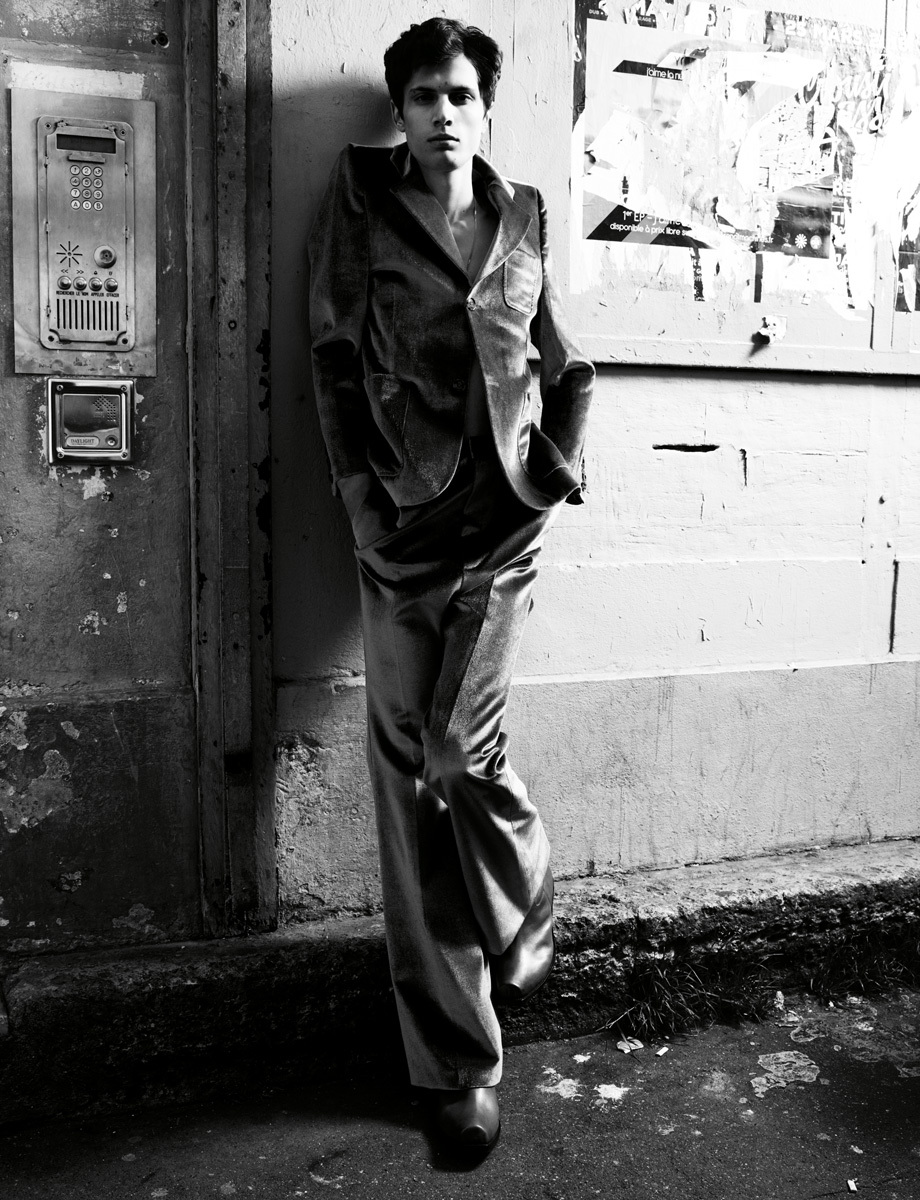
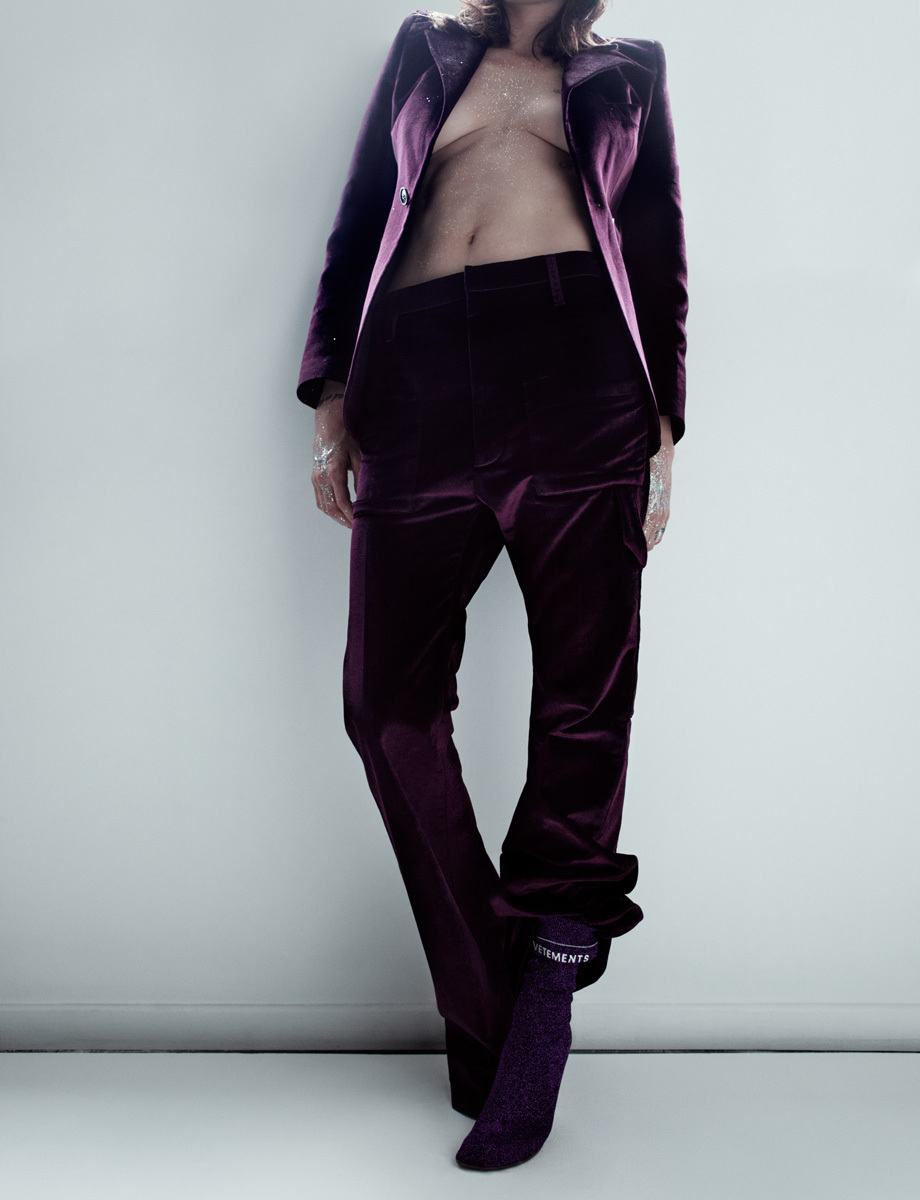




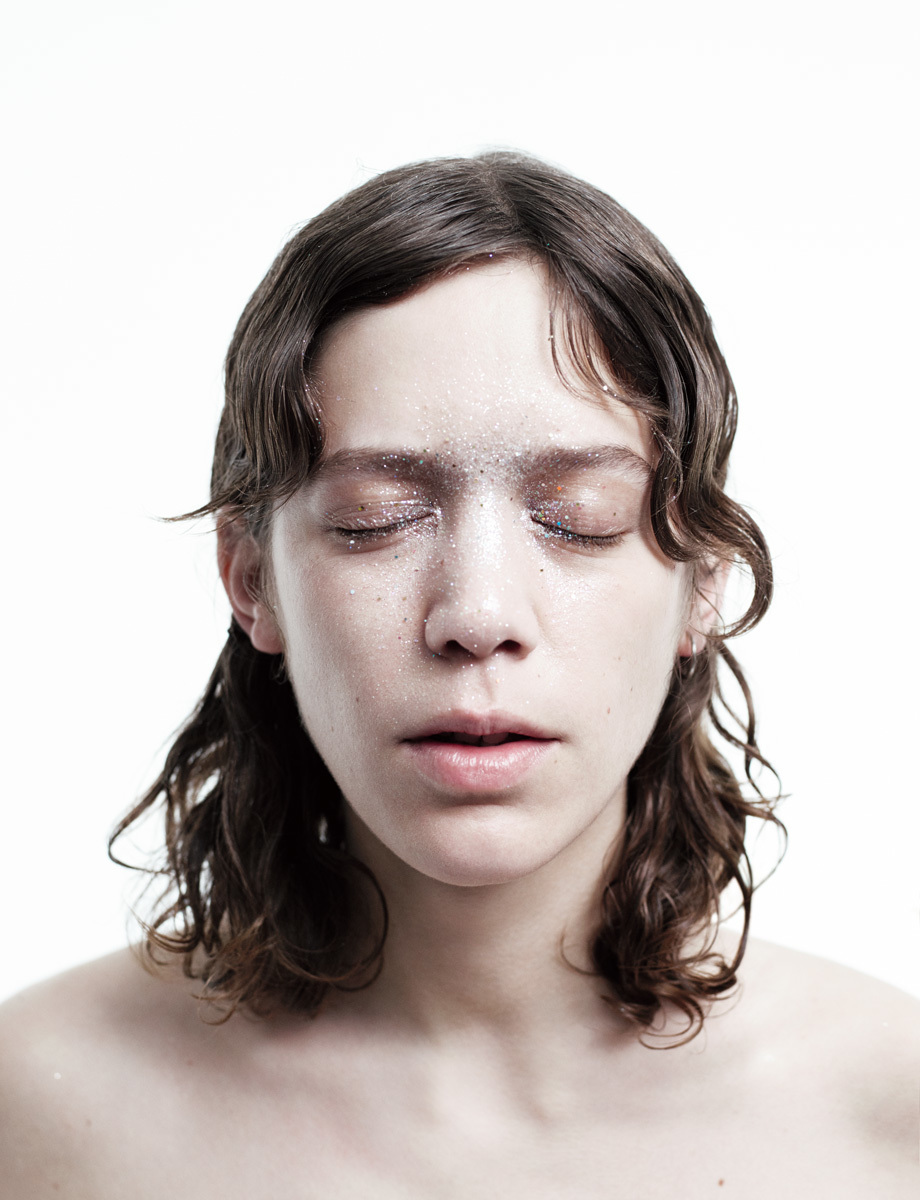



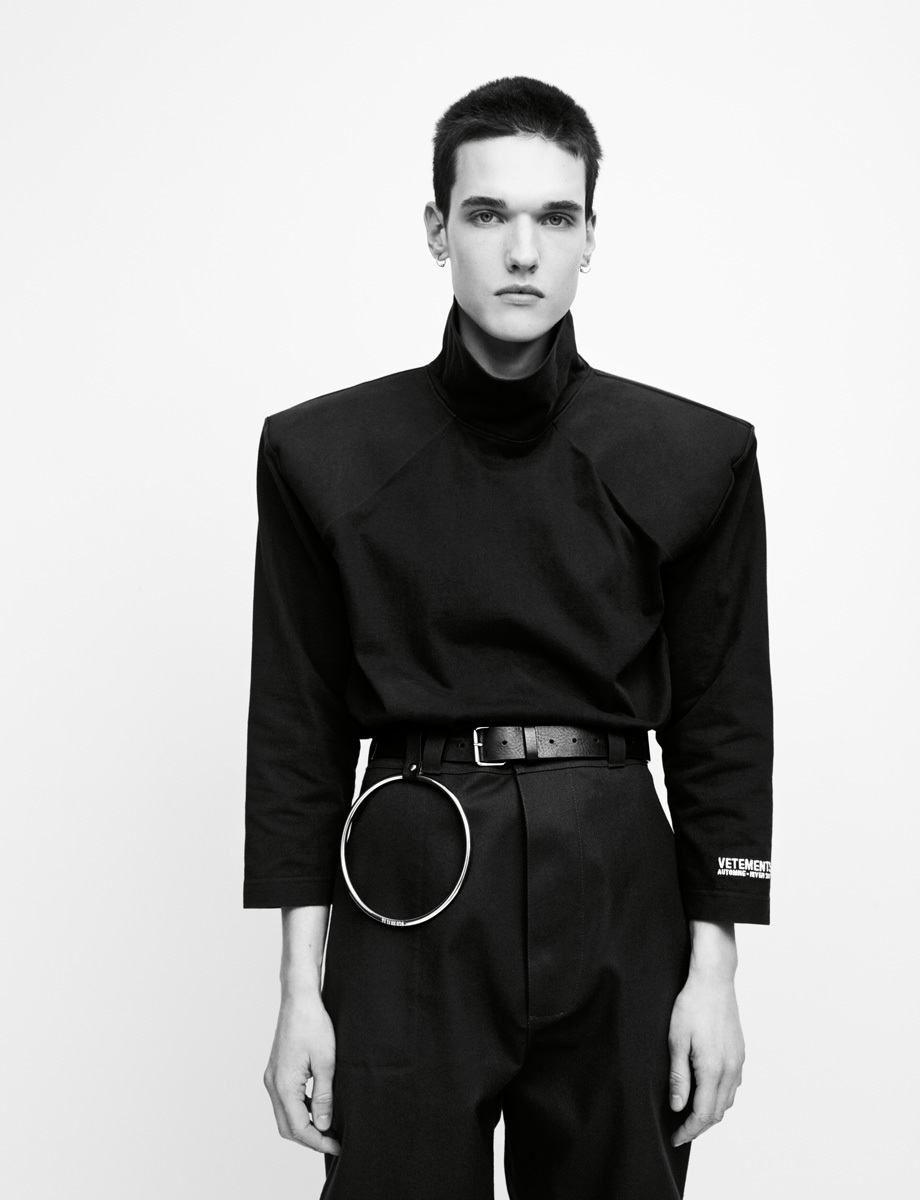
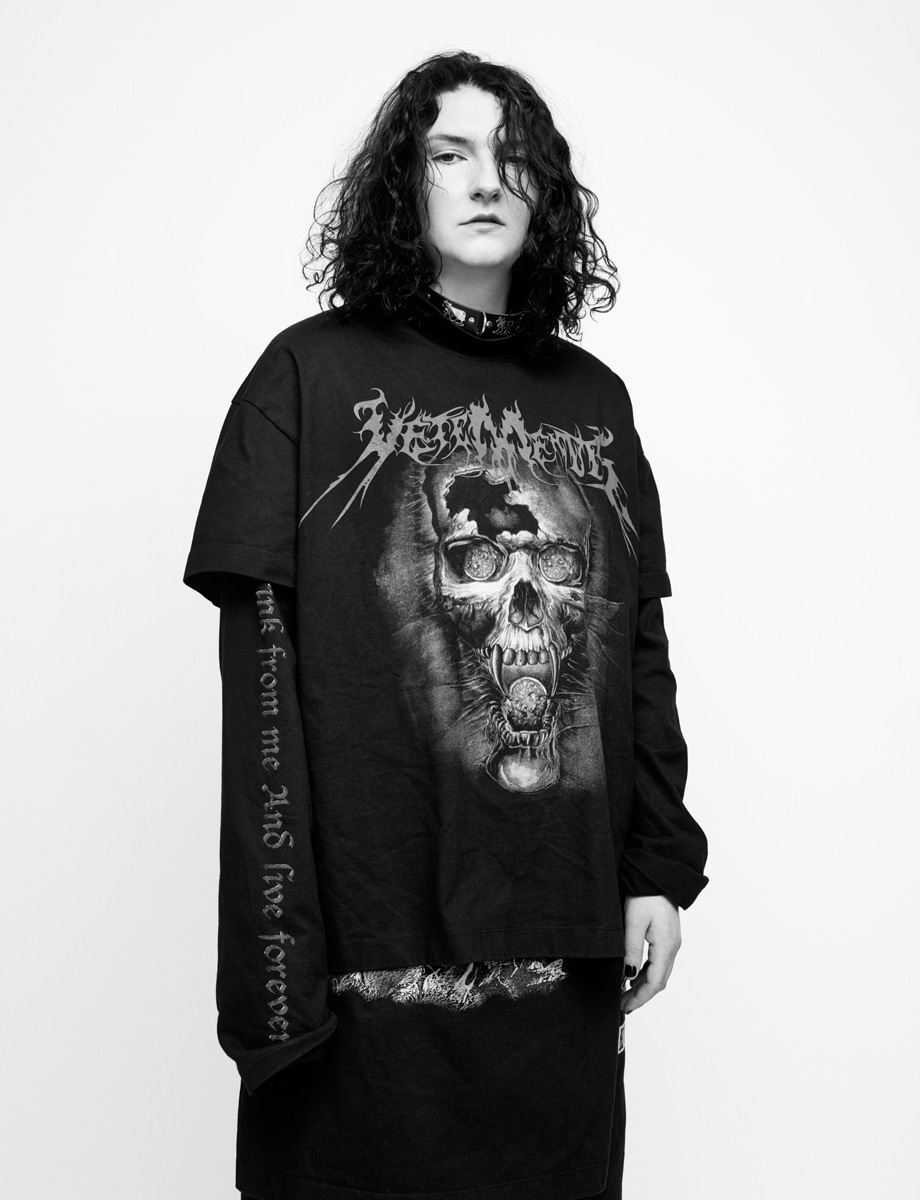


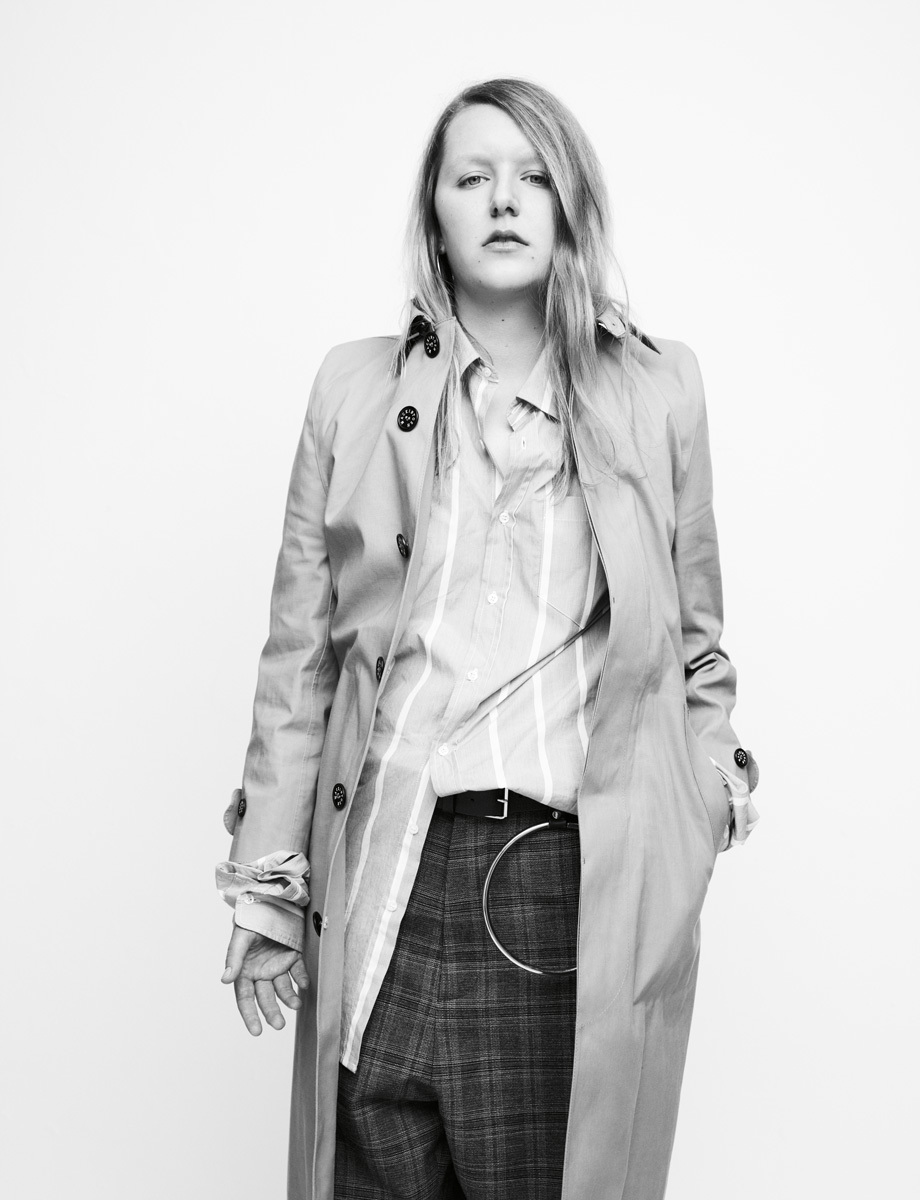




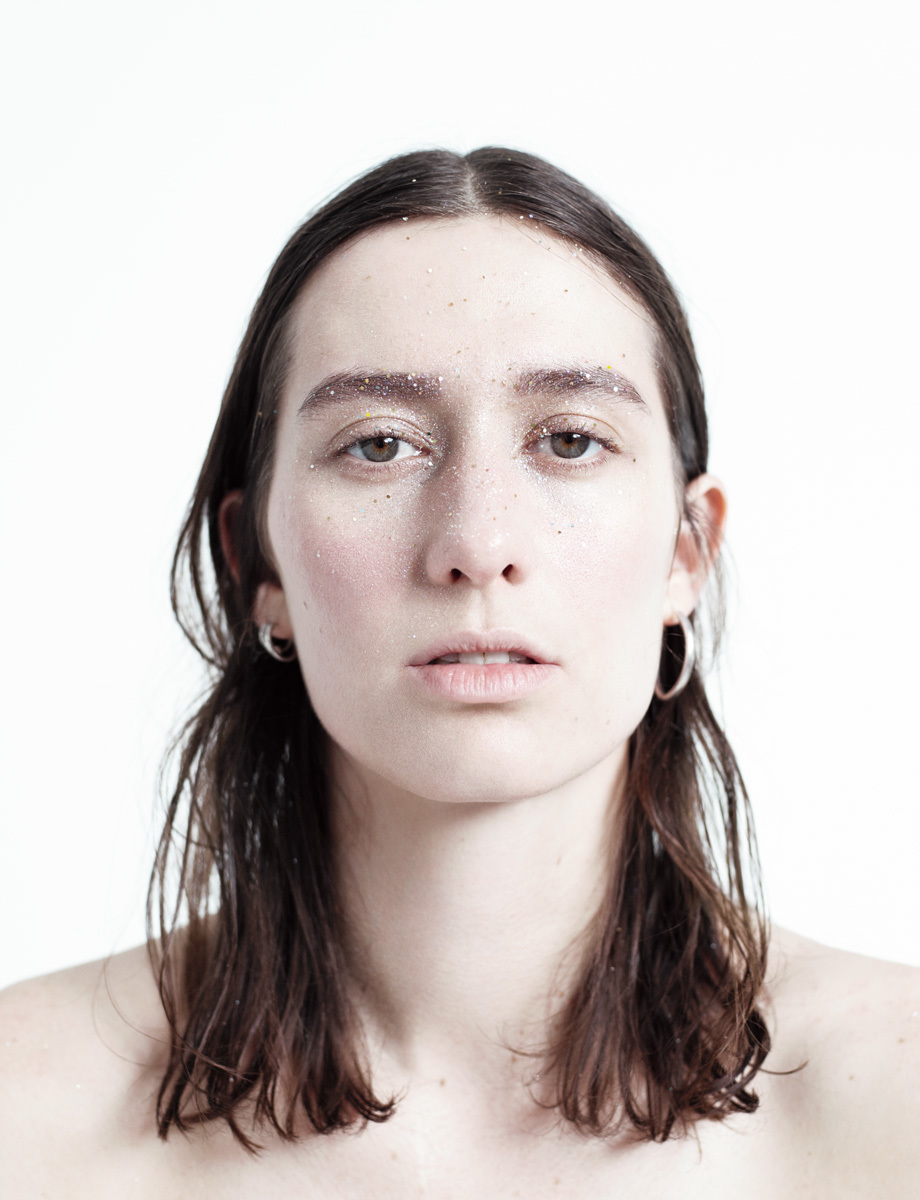
Credits
Text Anders Christian Madsen
Photography Willy Vanderperre
Fashion Director Alastair McKimm
Hair Anthony Turner at Art Partner
Make-up Lynsey Alexander at Streeters for Estée Lauder Make-up
Nail technician Anatole Rainey at Premier using Chanel Le Vernis and Body Excellence Hand Cream
Lighting technician Romain Dubus
Photography assistance Corentin Thevenet, Mickael Bambi
Digital technician Henri Coutant at Dtouch
Styling assistance Lauren Davis, Sydney Rose Thomas, Louise Mast
Hair assistance Eliot McQueen, Yusuke Tanigushi
Make-up assistance Shelley Greenhalgh, Kana Nagashima
Production Floriane Desperier at 4Oktober
Production assistance Clement Camaret
Models Paul H at Tomorrow Is Another Day. Clara 3000. Francois at Rebel. Liza at VIVA. Natan at Hakuna. Maud Escudié. Pzwerk. Maja Weiss. Robin Meason. Laura Tanzer. Georg Naoum. Matt Dyer. Alain Philippe. Vincent Esclade. Aileen Klein. Tandi at Oui Management. Sami at Success. Remi at Elite Paris. Caroline at Women.
All clothing worn throughout Vetements fall/winter 16. Paul wears jock strap David Samuel Menkes.
